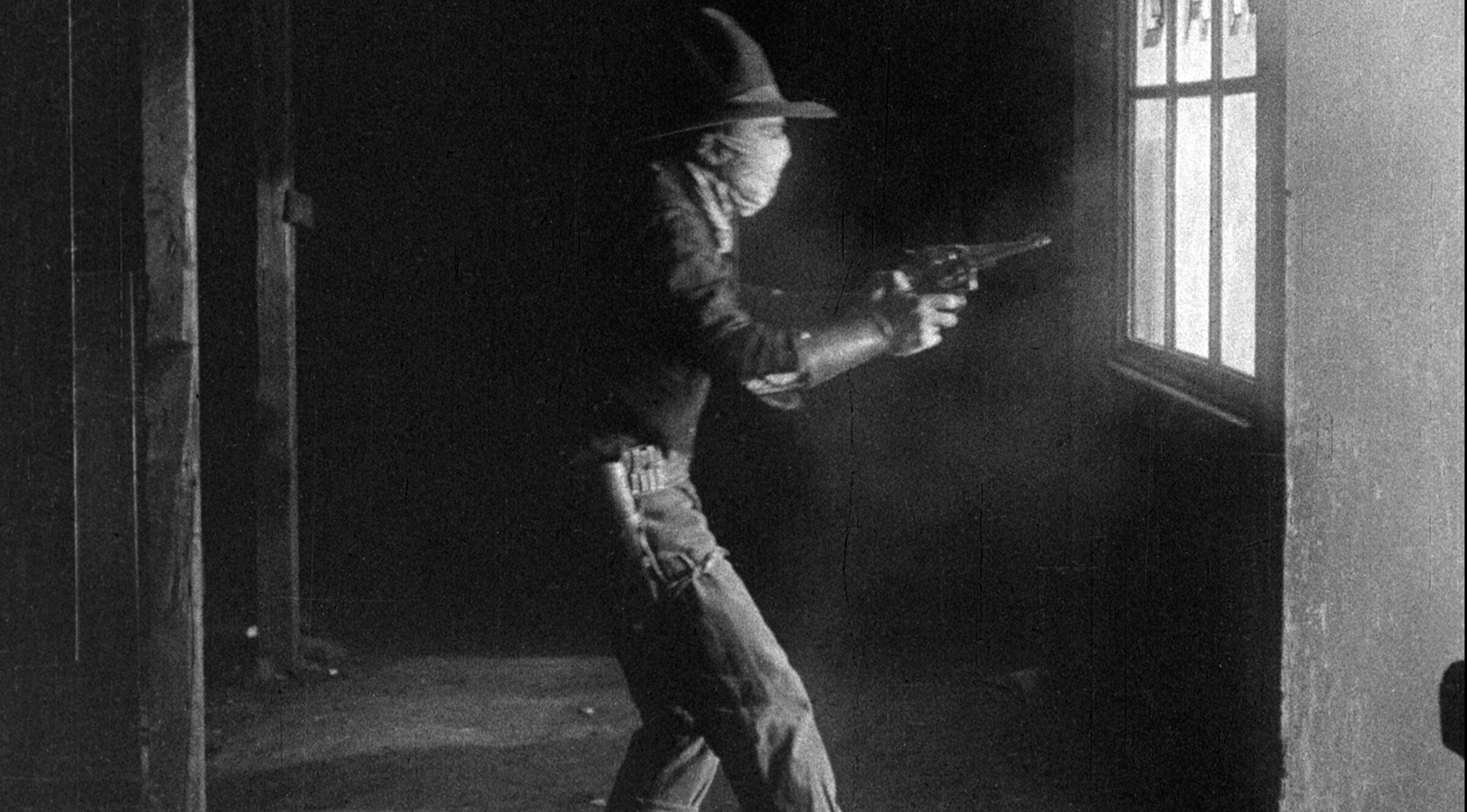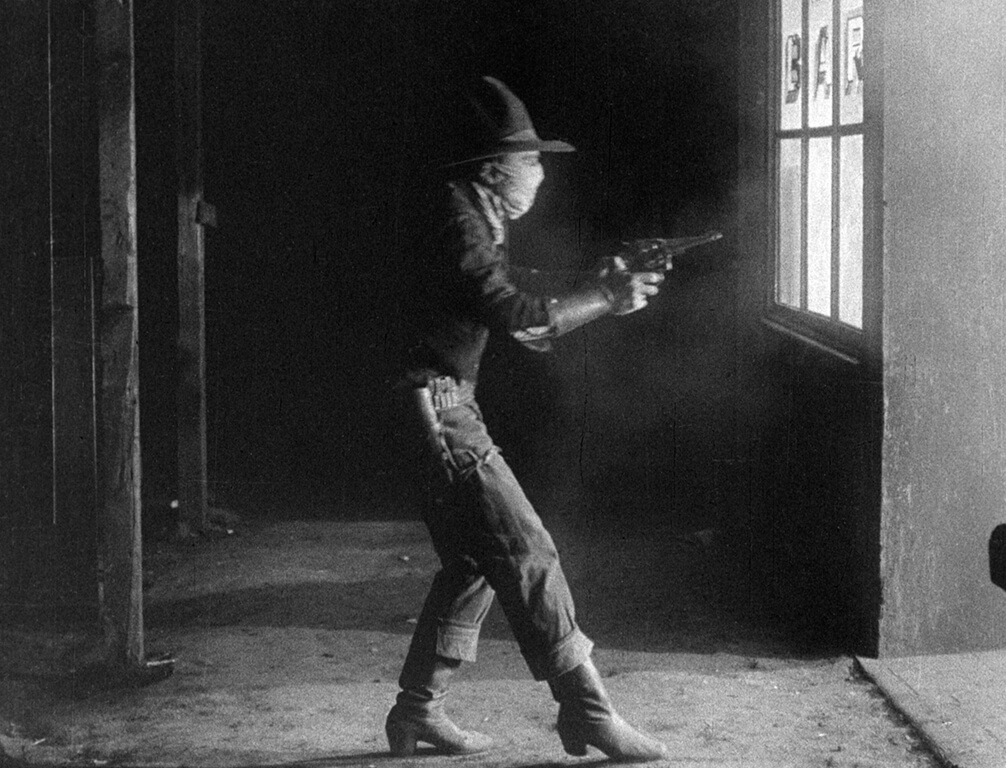The Good Bad Man
About the Film
A cowboy Robin Hood, “Passin’ Through” steals money so he can give it to children born out of wedlock, because he believes that his own mother was never married. Then Passin’ Through finds out that his birth was a lawful one, but that Bud Frazer, who had once courted his mother, killed her new husband and then hounded her until she died. Passin’ Through decides to go after Frazer, not only to avenge his parents, but also to rescue Amy, whom Frazer has kidnapped and whom Passin’ Through loves. When he locates Frazer, Passin’ Through finds himself outnumbered, but when a posse arrives to help him, he is finally able to kill Frazer and his henchmen, and then goes riding off with his sweetheart. A cowboy Robin Hood, “Passin’ Through” steals money so he can give it to children born out of wedlock, because he believes that his own mother was never married. Then Passin’ Through finds out that his birth was a lawful one, but that Bud Frazer, who had once courted his mother, killed her new husband and then hounded her until she died. Passin’ Through decides to go after Frazer, not only to avenge his parents, but also to rescue Amy, whom Frazer has kidnapped and whom Passin’ Through loves. When he locates Frazer, Passin’ Through finds himself outnumbered, but when a posse arrives to help him, he is finally able to kill Frazer and his henchmen, and then goes riding off with his sweetheart. —American Film Institute
About the Restoration
On January 12, 1923, Variety magazine reported that Harry Aitken, one-time president of Triangle Film Corporation, had taken possession of “2,000 subjects made by Mutual and Triangle” through liquidation of his former company. Six months later, Aitken’s newly formed Tri-Stone Pictures announced plans to release 24 revised editions of Triangle’s biggest successes, including The Good Bad Man. Subsequently released October 19, 1923, Douglas Fairbanks’s fifth feature was reedited and outfitted with new intertitles, written by John Emerson and Anita Loos. The Good Bad Man was produced by the Fine Arts Corporation and released May 7, 1916. Unfortunately, no film or script materials are known to survive. However, contemporary newspaper reviews and trade press synopses confirm that the plot, storyline, characters, and relationships remained fairly consistent across the two versions. Tri-Stone promoted the film as updated and undoubtedly the revised titling went further than renaming the characters. Mary Alden’s character changed from Jane Stuart to Nan Wilson, Bessie Love’s character Amy became Sarah May, or simply “The Girl,” and Joseph Singleton’s “Pap,” uncredited in 1923, was originally named “The Weasel.” In addition to rewritten titles, the 1923 release also modified the editing, though to what extent is impossible to determine. For example, Passin’ Through’s recurring bit with the train conductor’s hole punch is never explained, which, in turn, leads to the assumption that the segment depicting the train robbery was excised. Likewise, Pap and Passin’ Through’s father may have been deemphasized in the later release as their parts seem underdeveloped and neither is named in the 1923 screen credits. This new restoration of The Good Bad Man is based on a 35mm copy of the 1923 Tri-Stone release preserved in the collection of the Cinémathèque Française and is the result of a collaborative partnership of the San Francisco Silent Film Festival, the Film Preservation Society, and Cinémathèque Française.
Restoration Partners
San Francisco Silent Film Festival
Cinémathèque Française
Film Preservation Society


